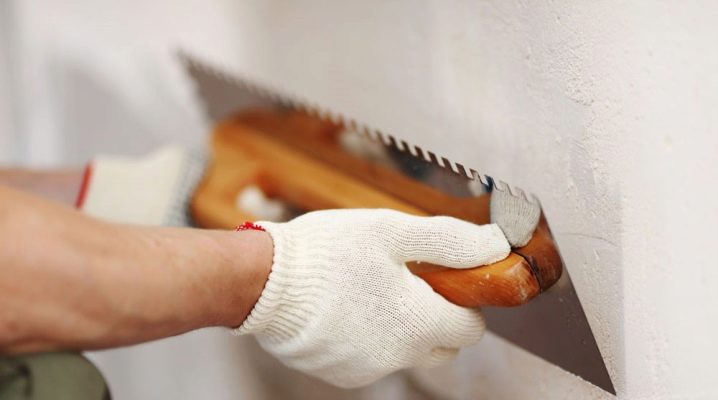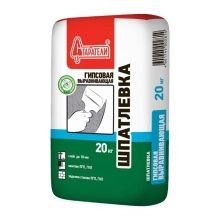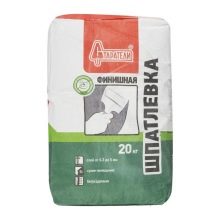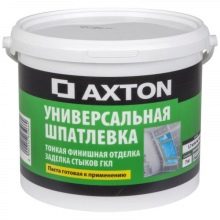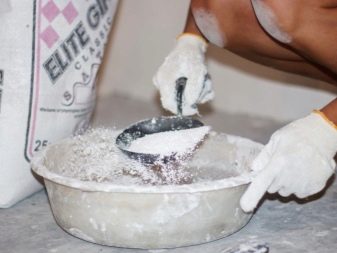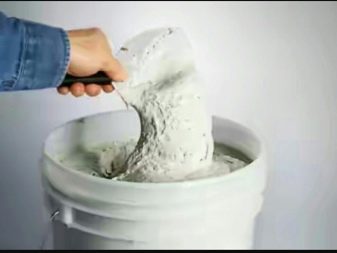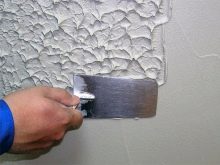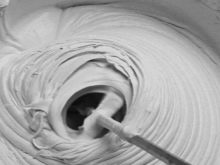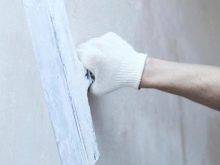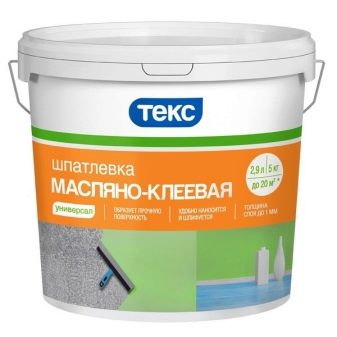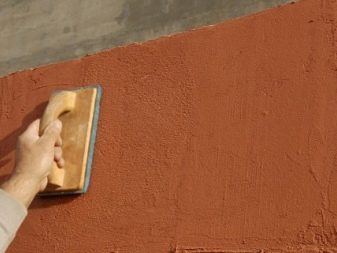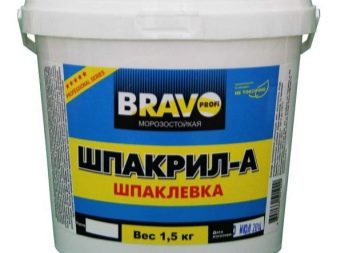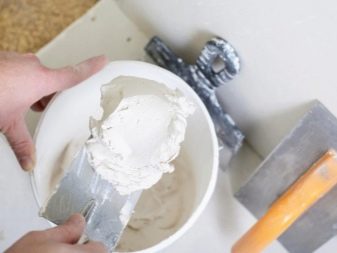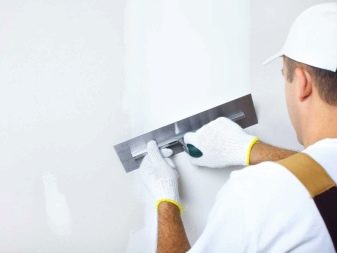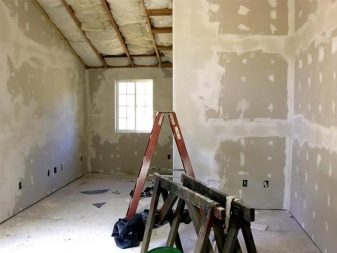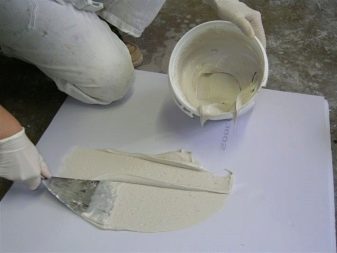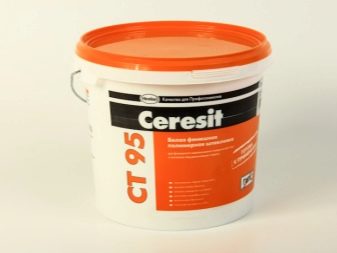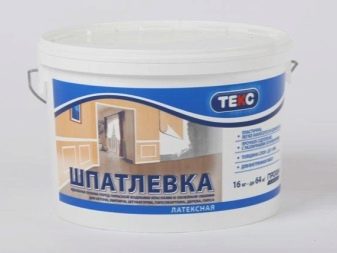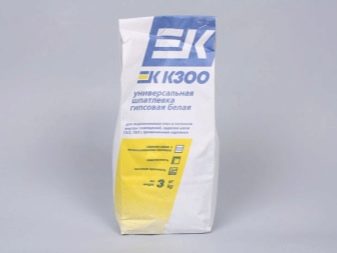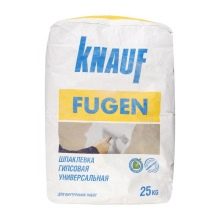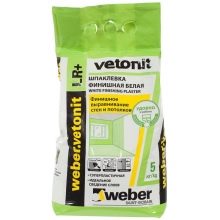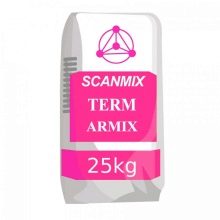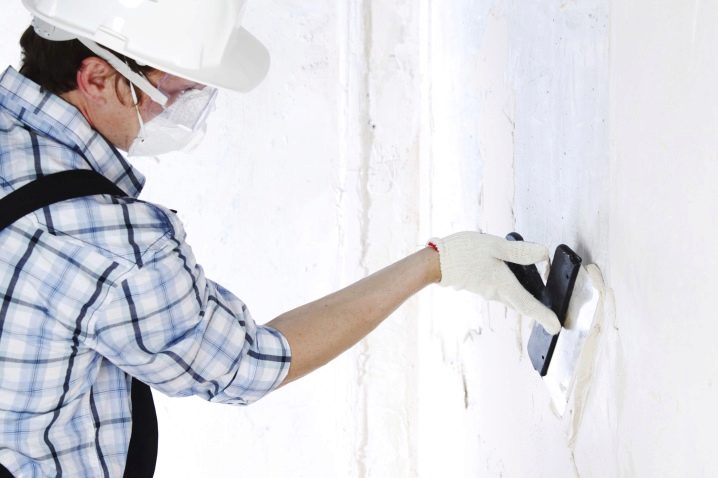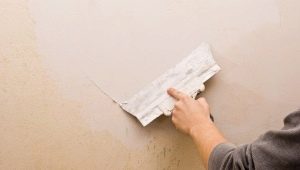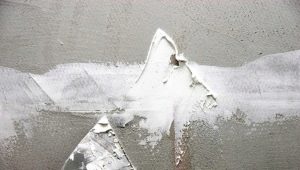Putty consumption per 1 m2 of wall: calculation details
Before you begin construction work, you must carefully study the features and technology of the material. Consumption of putty must be done before the trip to the store, because the incorrectly calculated amount may delay repair for a long time.
Types of putty and application
To choose the right putty, it is necessary to study the characteristics and features of the operation of each type of material. According to the scope of application, putty is divided into several types.
- Leveling - this type is used in the initial stages of repair, it can be used to carefully align the walls or ceiling, and also to hide various surface defects. The material dries quickly and practically does not lend itself to grinding. The leveling putty is applied on brick or concrete. If you do not put the finish putty, then the surface will not be able to glue the wallpaper or paint it.
- Finish line - it is applied in a thin layer, it prepares the surface for finishing.Thanks to the fine-grained structure and plasticity, the walls and ceiling are smooth. The layer thickness is 0.5 cm, but must be applied in several layers.
- Universal - it can be used both for starting and for finishing. This type is designed for any surface, ensures a smooth coating without flaws. The material has a high level of strength and easy to putty. But the cost of universal plaster is rather high, but even beginning specialists can work with it.
Hard putties also differ in the level of readiness: they are dry and ready. The first type has a powder composition and is sold in bags of 5 to 25 kg. Shelf life - one year, you need to save the material in a dry form.
Ready putty is sold on latex and water dispersion basis in special containers. Special substances present in the composition of this material, ensure the durability of the product.
Also putties are distinguished on a basic basis:
- On plaster basis - in the composition has a gypsum, polymer additives and all kinds of fillers.This product is ideal for rooms with low humidity. Such a putty is safe, odorless and has affordable cost, thermal insulation, elasticity, fire resistance.
- On cement basis - the product is suitable for facade and interior work. The composition has cement, sand and water. When the putty dries, the surface must be sanded. Mixture in diluted form is recommended to apply within 24 hours.
- Polymer - used for coating cement, concrete, plaster and polyurethane surfaces. Differs in high cost, but environmental friendliness and safety.
- Acrylic - it is intended for the finishing stages, namely - for careful alignment of a surface for its future finishing. The product is resistant to damage, is of high quality and safety.
- Latex - often it is used for drywall, niches or arches, but it does not withstand low temperatures. Differs plasticity and durability. It is easy to work with her on drywall even for a beginner builder.
- Water dispersion - designed for plastering walls and ceilings made of concrete, brick, aerated concrete, wood, stone and other materials.
- Oil-adhesive - it is used on wooden and concrete surfaces for walls and ceiling paint. Well proven in working with wet surfaces.
- Facade - it is intended for external works, possesses moisture resistance, durability, fast speed of drying.
- Shpakril - special putty for baseboards and wall leveling after plastering.
Among such a wide range of putties it is quite difficult to choose the optimal type, so in case of difficulty it is better to immediately contact a specialist.
What does the expense depend on?
The consumption of each type of material per square meter is calculated individually. For example, some types of putty should be applied in several layers, and in some cases it is enough just one layer with a thickness of 0.5 mm.
Material calculation also depends on the surface. If it has a lot of irregularities, cracks, height differences, then putty will need more. Therefore, if you yourself are building a building, try to keep as few defects as possible.
The experience of the builder also influences the consumption of the material, because the more experienced the master, the better his work will be, and the less putty he will spend.
How much need putty on the room can be found by making preliminary calculations. But note that the quality of the prepared mixture also affects the consumption.
How to calculate?
In order for the construction work to buy the required amount of putty, you need to know exactly the perimeter of the room and the height of the walls. The calculation can be done independently, knowing such information as: the sum of the length of all the walls in the room, the height of the walls. Also, be sure to take into account the width and length of the walls, as well as - the thickness of the imposing material.
Calculation of material per square meter is performed according to the formula:
- the consumption rate of putty per 1 m2 is multiplied by the thickness of surface defects;
- summarizes the length of all the walls in the room;
- the length of the wall above the doorway is multiplied by the height in the same area, the sum of the height of the walls is added to the result;
- the result of the first action is added to the sum of the lengths of all the walls, this result is multiplied by the resulting number of the third action.
To calculate the cost of putty on 1 square.m, it is necessary to divide the price by the number of kilograms of material.
One bag of putty each lacks in different ways - it all depends on how many layers to apply and in what quantity.
Each manufacturer in the characteristics table indicates its numbers, which depend on the chemical properties and type of material. For example, 20 kilograms of the finished mixture of the final type will be enough for 38 - 40 square meters.
Using popular brands
Being engaged in repair work for the first time, you will probably run into the problem of choosing high-quality putty. It is best to opt for the products of well-known companies with a good reputation. Of course, the cost of such putties is higher, but they are well mixed, easily applied to the surface and do not crack with time.
- Demanded is brand Ceresit, in its assortment there are various types of putties for both starting and finishing finishes. For example, Ceresit CT29 is used to work with brick, concrete, cement surfaces. Apply the mixture after an hour after mixing, and it dries in 15 hours. The product Ceresit CT 225 is designed for finishing, resulting in a smooth and durable surface.
- Putty "Miners" and "Hercules" - materials that are appropriate for use in rooms with a high level of humidity. The mixture can be applied even on damp walls, they are durable, reliable and durable. The "miners" are supplied in strong bags of 5 and 20 kg. Produced such putty on the basis of white cement.
- Latex putty "Tex" is very popular among the masters. Regardless of the thickness of the layer, the mixture has the strength, long service life. The material is elastic, does not leave unnecessary traces after a spatula pulling on the wall or ceiling. Large selection of color shades allows you to please every buyer.
- Worthy of attention putty "EC"which is used to eliminate defects on foam concrete, cement and plaster surfaces. The mixture is used for sealing joints, it is applied with a thin layer, thereby preparing the walls or ceiling for painting or wallpapering. The product is easy to use, after drying it creates a high level of strength.
- Company Knauf offers a wide range of putty mixtures: finished and dry products, gypsum, cement, finishing, starting, waterproof, etc.After application, the mixture makes the surface even and smooth.
- Putty "Vetonit" have earned a huge amount of positive feedback due to a wide range of species and excellent characteristics. Mixtures of this brand can be used in various conditions. The price range allows you to please every buyer.
- "Scanmix" - putty for exterior work, made on the basis of cement, therefore, has a high moisture resistance. In addition, this mixture is resistant to low temperatures. Also, the product is environmentally friendly, it is safe for both the environment and human health.
Useful recommendations
Wall finishing is carried out in several stages, for each of which there is a specific type of putty: starting, universal, finishing. Accordingly, for each mixture has its own recommendations for application.
- Starting putty consumed in large quantities because of its coarse composition. It should be applied twice, but in the gap the first layer should be completely dry. The thickness of the layer should not exceed 8 mm. For relatively flat surfaces, experts recommend applying from 0.9 to 1.2 kg per m2, the thickness of both layers is 11 mm.Exceeding these factors will in the future lead to the formation of defects on walls or ceilings.
- Finishing is applied with a thin layer, therefore it is necessary to buy it in smaller quantity. To get a smooth surface, the work must be done carefully, because the layer should not exceed 1 mm. In this case, you will spend 0.7 kg per m2.
- Universal putty used to align the walls and for final finishing. Approximately consumes 20 kg per 25 m2. But experts advise to use finishing putty for final surface treatment to obtain a better and more durable coating.
Fill accurate calculations regarding the costs of putty will not work, the results can be approximate. But in the calculations it is necessary to pay attention to the manufacturer's instructions, which are indicated on the packages.
Do not forget that the expenditure data are indicated on the basis of a layer thickness of 1 mm. It is recommended to increase the result obtained by about 10%, since when working on the spatula and on the walls of the container there is always unused material.
On how to calculate the consumption of putty, see below.
